Trinexapac-ethyl
- CAS NO.:95266-40-3
- Empirical Formula: C13H16O5
- Molecular Weight: 252.26
- MDL number: MFCD01632318
- EINECS: 680-302-2
- SAFETY DATA SHEET (SDS)
- Update Date: 2025-07-04 15:09:44
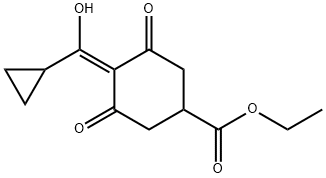
What is Trinexapac-ethyl?
Description
Trinexapac-ethyl is a synthetic plant growth regulator developed by Syngenta, Switzerland. It inhibits the production of gibberellic acid and shortens the internodes on grasses grown for seed and cereals which results in a reduction in lodging. It can be used for crop height reduction, lodging prevention and yield protection in all varieties of winter and spring wheat, winter and spring barley and winter and spring oats, durum wheat, rye, triticale and grassland (seed crops).
The Uses of Trinexapac-ethyl
Trinexapac-ethyl is a synthetic plant growth regulator that is derived from cyclohexanecarboxylate. It is used to control the growth on various grass species and crops. Trinexapac-ethyl is approved for use on cereal crops such as barley, durum wheat, oats, rye, triticale and wheat as well as grassland, amenity turf and managed turf.
Definition
ChEBI: Trinexapac-ethyl is an ethyl ester resulting from the formal condensation of the carboxy group of trinexapac with ethanol. It has a role as a xenobiotic, an environmental contaminant, a plant growth regulator, an agrochemical, a pro-agent and a gibberellin biosynthesis inhibitor. It is a member of cyclohexanones, a beta-hydroxy ketone, an enol, an ethyl ester and a member of cyclopropanes. It derives from a trinexapac.
Carcinogenicity
The U.S. EPA has classified trinexapac-ethyl as "not likely to be carcinogenic to humans."
No studies area available in humans to inform on carcinogenicity of trinexapac-ethyl.
The carcinogenic potential of trinexapac-ethyl has been well investigated in two guideline and GLP compliant dietary studies; a 2-year study in the Sprague-Dawley rat (Anon., 1992) and an 18-month study in the CD-1 mouse (Anon., 1991).
Overall, RAC agreed with the DS that there is insufficient evidence to support classification for carcinogenicity.
Mode of action
Trinexapac-ethyl acts as an inhibitor of the action of a key enzyme in the formation of gibberellic acid (GA1), preventing the formation of the plant growth regulator gibberellins, which promotes cell elongation. In the absence of gibberellins the internodes of the plants fail to grow and prevent the plant from growing taller. This can be used to prevent lodging in crops and amenity turf, increase the yield in crops by redirecting energy into the production of reproductive parts and finally to reduce the frequency of mowing in turf.
Properties of Trinexapac-ethyl
| Melting point: | 32-36°C |
| Boiling point: | 355.44°C (rough estimate) |
| Density | 1.2380 (rough estimate) |
| refractive index | nD30 1.5350 |
| storage temp. | Sealed in dry,Room Temperature |
| solubility | Chloroform (Slightly), Methanol (Slightly) |
| form | neat |
| pka | 4.7(at 25℃) |
| color | Off-White to Dark Yellow Low-Melting |
| CAS DataBase Reference | 95266-40-3(CAS DataBase Reference) |
| EPA Substance Registry System | Trinexapac-ethyl (95266-40-3) |
Safety information for Trinexapac-ethyl
| Signal word | Warning |
| Pictogram(s) |
 Exclamation Mark Irritant GHS07  Environment GHS09 |
| GHS Hazard Statements |
H317:Sensitisation, Skin H410:Hazardous to the aquatic environment, long-term hazard |
| Precautionary Statement Codes |
P261:Avoid breathing dust/fume/gas/mist/vapours/spray. P272:Contaminated work clothing should not be allowed out of the workplace. P273:Avoid release to the environment. P280:Wear protective gloves/protective clothing/eye protection/face protection. P302+P352:IF ON SKIN: wash with plenty of soap and water. P333+P313:IF SKIN irritation or rash occurs: Get medical advice/attention. |
Computed Descriptors for Trinexapac-ethyl
| InChIKey | RVKCCVTVZORVGD-QXMHVHEDSA-N |
Trinexapac-ethyl manufacturer
New Products
4,4-Difluoropiperidine hydrochloride tert-butyl 9-methoxy-3-azaspiro[5.5]undecane-3-carboxylate Indole Methyl Resin N-Isopropylurea N,N-Dicyclohexylcarbodiimide(DCC) MELDRUMS ACID 5-METHYLISOXAZOLE-4-CARBOXYLIC ACID Magnessium Bis glycinate Zinc ascorbate 1-bromo-2-butyne 2-acetamidophenol 9(10H)-anthracenone Erythrosin B, 4-Piperidinopiperidine 2-((4-morpholinophenylamino) (methylthio) methylene) malononitrile 2,4-dihydroxybenzaldehyde 3-(4-morpholinophenylamino)-5-amino-1H-pyrazole-4-carbonitrile Methyl 2-methylquinoline-6-carboxylate 2,6-dichloro-4-nitropyridine 4-Bromo-2-chlorobenzonitrile 2-(benzylamino)acetic acid hydrochloride 4-(tert-Butoxycarbonylamino)but- 2-ynoic acid 3,4-dihydro-2H-benzo[b][1,4]dioxepine 1-Phenyl-1-cycloprppanecarboxylicacidRelated products of tetrahydrofuran
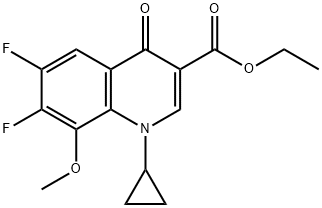


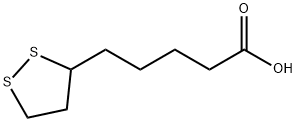

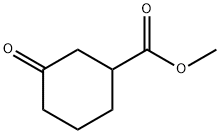
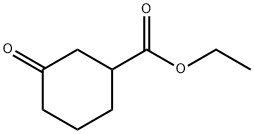

You may like
-
 Trinexapac-ethyl 95% CAS 95266-40-3View Details
Trinexapac-ethyl 95% CAS 95266-40-3View Details
95266-40-3 -
 Trinexapac-ethyl CAS 95266-40-3View Details
Trinexapac-ethyl CAS 95266-40-3View Details
95266-40-3 -
 3-(4-amino-1-oxoisoindolin-2-yl)-1-methylpiperidine-2,6-dione 98%View Details
3-(4-amino-1-oxoisoindolin-2-yl)-1-methylpiperidine-2,6-dione 98%View Details -
 614-19-7 98%View Details
614-19-7 98%View Details
614-19-7 -
 20677-73-0 (2,2-diethoxyethyl)methylamine 98%View Details
20677-73-0 (2,2-diethoxyethyl)methylamine 98%View Details
20677-73-0 -
 3-(4-(hydroxyamino)-1-oxoisoindolin-2-yl)piperidine-2,6-dione 98%View Details
3-(4-(hydroxyamino)-1-oxoisoindolin-2-yl)piperidine-2,6-dione 98%View Details -
 57381-49-4 2-bromo-4-chlorobenzonitrile 98%View Details
57381-49-4 2-bromo-4-chlorobenzonitrile 98%View Details
57381-49-4 -
 4,6-dichloropyrimidine-5-carbaldehyde 98%View Details
4,6-dichloropyrimidine-5-carbaldehyde 98%View Details
5305-40-8
